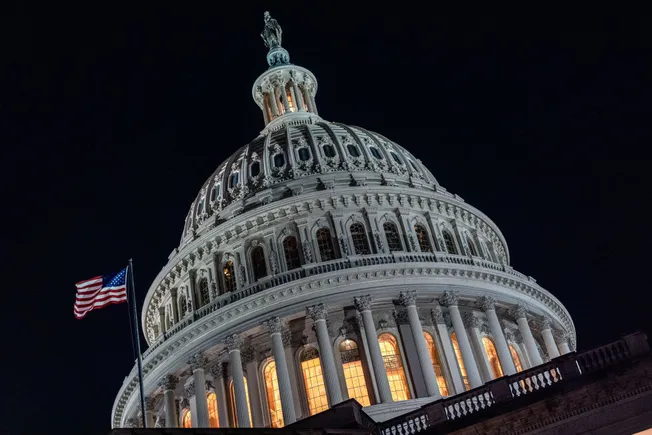The Senate has advanced a budget blueprint that calls for significantly lower spending cuts than its House counterpart, setting the bodies up for a clash in reconciling the two plans as the healthcare sector braces for potential cuts to Medicaid.
On Saturday, the Senate voted 51 to 48 largely along party lines to send its budget resolution to the House for consideration. The resolution calls for $4 billion in budget cuts, a pittance compared with the $1.5 trillion goal set out by the House in its own budget wishlist earlier this year.
However, the Senate’s budget blueprint first revealed last week preserves the House’s directive that the Energy and Commerce Committee, which oversees Medicare and Medicaid, find $880 billion in spending cuts.
During Friday and Saturday’s marathon of votes on amendments, the Republican-majority Senate declined to strike the $880 billion cut from the final resolution but did accept an amendment to establish a deficit-neutral reserve fund related to “protecting Medicare and Medicaid.”
The final blueprint also allows the Senate Committee on Finance, which also has jurisdiction over Medicare and Medicaid as well as tax and other fiscal policy, to add up to $1.5 trillion to the federal deficit.
However, the Senate’s budget relies on a controversial mechanism that argues extending tax cuts first enacted in 2017 won’t add to the nation’s debt. The “current policy baseline” assumes cuts that are currently scheduled to expire after this year are included in baseline numbers for spending and revenue.
Without that maneuver, the Senate’s budget would add up to $5.8 trillion to the federal deficit, according to the Committee for a Responsible Federal Budget. The CRFB slammed the move as an “unmitigated disgrace” that lets the chairman of the Senate Budget Committee “literally make up numbers.”
Republicans defended the use of the current policy baseline as necessary, with Senate Finance Committee Chairman Mike Crapo, R-Idaho, saying the passage of the budget would unlock the process to implement “serious spending reforms.”
“I look forward to continuing our work in the coming weeks to quickly deliver on President Trump’s pro-growth economic agenda,” Crapo said in a statement on Saturday.
However, Democrats decried the resolution, with Senate Finance Committee Ranking Member Ron Wyden, D-Ore., arguing the plan allows Republican lawmakers to “hide the fact that they want to pay for handouts to billionaires and corporations by kicking millions of Americans off their health insurance.”
Potential cuts to Medicaid, the safety-net insurance program that along with the Children’s Health Insurance Program covers 80 million Americans, has become a significant concern for the healthcare sector.
Reducing funding to Medicaid is unpopular with voters and could weigh on hospitals’ bottom lines — a particular challenge for under-resourced rural facilities that often serve Republican constituents.
Republican lawmakers have lately said they’ll focus on reducing fraud, waste and abuse in Medicaid instead of cutting services. But the $880 billion target for spending reductions under the Energy and Commerce Committee is impossible without touching the insurance program, according to a report published last month by the Congressional Budget Office.
Even if cuts are “a fraction of the size” of the $880 billion target, the spending reductions could cause “serious harm,” like leaving more people uninsured, said Sharon Parrott, president of progressive think tank the Center on Budget and Policy Priorities, in a statement prior to the Senate budget’s passage.


